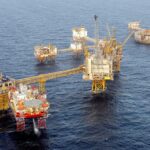De olieprijs is een strategische variabele die haar invloed tot in de haarvaten van de wereldeconomie laat gelden. Regionaal beschikbare oliereserves, productietechnieken en de daarmee verbonden kosten bepalen in hoge mate de internationale concurrentieverhoudingen, energiestromen en de daarmee corresponderende handelsstromen. Vele olieproducerende landen zijn voor hun welvaart en overheidsinkomsten sterk afhankelijk van de olie-export. Hoge prijzen betekenen voorspoedige economische ontwikkeling; lage prijzen leiden tot teruglopende exportinkomsten, begrotingstekorten, oplopende staatsschulden en andere vormen van economische ellende – in sommige landen, zoals Venezuela, zelfs tot totale maatschappelijke ontwrichting.
Door de opkomst van ‘fracking’ heeft de wereldenergiemarkt revolutionaire veranderingen ondergaan. De macht van OPEC is ingeperkt. Saoedi-Arabië was niet langer bereid om als ‘residual supplier’ op te treden en daardoor een redelijk stabiele hoge olieprijs (een prijs’parapluie’) te garanderen, waarvan andere olieproducenten, inclusief de westerse oliemaatschappijen, konden profiteren. In plaats daarvan gaf Saoedi-Arabië prioriteit aan de bescherming van zijn marktaandeel, hetgeen tot de val van de olieprijs heeft geleid. In de visie van Riyad zouden de ‘frackers’ daar niet tegenop kunnen en uit de markt worden geprijsd, waardoor de oude, traditionele marktverhoudingen weer enigszins konden worden hersteld. Het is anders gelopen.
Door dramatische efficiencyverbetering zijn vele ‘frackers’ erin geslaagd om de winningskosten fors omlaag te brengen, zodat zij zelfs bij het huidige relatief lage olieprijsniveau winstgevend kunnen produceren. Als zij dit weten vol te houden, zal dit tot een blijvend laag olieprijsniveau leiden.
Uiteraard heeft dit ook gevolgen voor de prijsverhouding tussen fossiele energie enerzijds en hernieuwbare energie anderzijds. Vele investeringen in hernieuwbare energie waren gebaseerd op de verwachting dat de prijs van fossiele energie zou blijven stijgen. Dat blijkt dus niet het geval te zijn, waardoor alleen permanente subsidiëring deze investeringen rendabel kan maken. Maar in vele landen worden de duimschroeven op dat terrein aangehaald. Het resultaat is toenemende onzekerheid over de economische levensvatbaarheid van hernieuwbare energie.
Onder de titel, Texas shale oil has fought Saudi Arabia to a standstill, schreef Ambrose Evans-Pritchard voor de Britse ‘Telegraph’:
Opec’s worst fears are coming true. Twenty months after Saudi Arabia took the fateful decision to flood world markets with oil, it has still failed to break the back of the US shale industry.
The Saudi-led Gulf states have certainly succeeded in killing off a string of global mega-projects in deep waters. Investment in upstream exploration from 2014 to 2020 will be $1.8 trillion less than previously assumed, according to consultants IHS. But this is a bitter victory at best.
North America’s hydraulic frackers are cutting costs so fast that most can now produce at prices far below levels needed to fund the Saudi welfare state and its military machine, or to cover Opec budget deficits.
Scott Sheffield, the outgoing chief of Pioneer Natural Resources, threw down the gauntlet last week – with some poetic licence – claiming that his pre-tax production costs in the Permian Basin of West Texas have fallen to $2.25 a barrel.
“Definitely we can compete with anything that Saudi Arabia has. We have the best rock,” he said. Revolutionary improvements in drilling technology and data analytics that have changed the cost calculus faster than almost anybody thought possible. The ‘decline rate’ of production over the first four months of each well was 90pc a decade ago for US frackers This dropped to 31pc in 2012. It is now 18pc. Drillers have learned how to extract more.
Mr Sheffield said the Permian is as bountiful as the giant Ghawar field in Saudi Arabia and can expand from 2m to 5m barrels a day even if the price of oil never rises above $55. … The majority of US shale fields are now viable at $60.
This is a cold douche for Opec. It has been an article of faith among Gulf exporters that hedging contracts had kept US shale companies on life-support and that there would be a brutal cull as these expired in the first half of this year. No such Gotterdamerung has occurred. ….
Opec may now have to brace for a longer war of attrition than they ever imagined. Global inventories of crude oil remain near all-time highs, record volumes are being stored on tankers off-shore. …
The losers are high-cost projects elsewhere: off the coast of Nigeria and Angola, in the Arctic, or the oil sands of Canada and Venezuela’s Orinoco basin. Roughly 4m to 5m barrels a day of future supply has been shelved around the world.
This sets the stage for an oil shortage and a price spike later this decade. Whether Opec can survive that long is an open question. Most of the cartel need prices of $100 to fund their regimes.
Venezuela is already in the grip of hyperinflation and food riots. Nigeria’s currency peg was smashed last month, and the naira has fallen 60pc. Angola has turned to the International Monetary Fund, Azerbaijan to the World Bank.
Saudi Arabia has deeper pockets but its net foreign reserves have fallen from $737bn to $562bn, even though it is borrowing money abroad to slow the loss.
If West Texas really can boost output by another 3m barrels a day at anywhere near $55 a barrel …. the Saudis may have to dig in for a very long and painful siege.
Lees verder hier.
Voor mijn eerdere bijdragen over klimaat en aanverwante zaken zie hier, hier, hier, hier en hier.






Geen olie, een explosieve toekomst in eigen land. “After the oil” hebben Saudies een groot maatschappelijk (en explosief?) probleem, een mono-economie op oil. Citycorp berekent dat na 2030 S.A. leeg gepompt is. UAE deed het slimmer, bouwt een nieuwe economie gericht op toerisme en wereld logistiek, voor na de olie, S.A. pleegt nu economisch zefmoord. http://journal-neo.org/2016/03/10/key-crisis-point-is-saudi-arabia-running-out-of-gas/
Deze economische zelfmoord van S.A. dwingt tot ingrijpende politieke koerswijziging wil het regiem uberhaupt overleven. http://money.cnn.com/2015/10/25/investing/oil-prices-saudi-arabia-cash-opec-middle-east/
Interessant artikel, dank heer Labohm.
Nu die dictatoriale regiems die het volk nog koest weten te houden met subsidies op brandstof (abusievelijk aangezien voor het veelgeroepen subsidiëren van fossiele brandstoffen gelijk aan die op hernieuwbare energie) en primaire levensbehoeften als brood, spijsolie e.d. , in de problemen komen, kunnen we toenemende destabilisatie verwachten. Revoltes e.d. En bedrijven als Shell en Exxon zullen een lange adem nodig hebben. Enfin, Greenpeace weer blij; hoeven ze niet naar de Noordpool te varen om daar heisa te schoppen.
Noordpool? Dat durft GreenPeace niet meer. Als je de analyses leest over de Saudi’s is dat een mogelijke aanleiding voor een WOIII. S.A. is volgeladen met Duitse en Amerikaans wapentuig om eigen volk en regio (Yemen, UAE) te onderdrukken. http://qz.com/533141/imf-saudi-arabia-is-in-danger-of-running-out-of-money-within-five-years/
Ff test, want ik kan niet posten? (haal dit maar weg als het nu wel luqt)
(technische problemen, test 1)
We leven maar in ingewikkelde tijden. Zo met die globalisering en zo. Wat mij betreft niet bepaald een zegen. Eerder een ramp zou ik willen zeggen.
Energie/olie/gas is daarbij een ‘economisch (oorlogs) wapen’ geworden.
Ik heb toch sterk het vermoeden dat de lage olieprijs alles te maken heeft met het economisch kapot willen maken van Rusland.
Temeer daar die hele oorlog in Syrie eigenlijk min of meer gaat om die oliepijpleiding van Saoudie/Quatar naar het westem. En die leiding moest door Syrie.. en Assad wilde dat niet. Tevens wilde Putin ook een leiding naar het westen, of die door Syrie moest gaan weet ik even niet meer, maar dat wil de US dus niet. En Turkije wellicht ook niet.
En ik heb eens jaren geleden een docu gezien over het begin van het olie tijdperk, ik meende in Saudie. Hilarisch was die. Men leefde daar in stammen. Min of meer in de woestijn. Reden op kamelen en sliepen in tenten.
Toen de amerikanen daar voor het eerst olie oppompten, werden de kamelen al ras ingeruild voor dure Bently’s, Rolls Royces, amerikaanse sleeen etc. Maar ze woonden en sliepen nog steeds in tenten :)
Dus in één klap werden daar arme nomaden volkeren/stammen super rijk.
Dat kan natuurlijk nooit echt helemaal goed gaan, want het is onnatuurlijk.
Overigens hielden ze op met elkaar steeds de kop inslaan.
En de ‘slimme’ amerikanen maakten vervolgens de Saoudi’s wijs dat zij nu wapens moesten kopen om de (amerikaanse) olievelden te ‘beschermen’.
Amerika had dus dubbel winst: bijna gratis olie en gigantische wapenverkopen.
De Saoudies hadden netto nauwelijks winst, wat alle geld wat binnengehaald werd met olie ging er aan de andere kant weer uit aan (toendertijd) nutteloze wapens.
Uiteraard moesten er ook mensen worden opgeleid om met deze high tech wapens om te gaan etc. Dus driedubbel winst.
Over een land leeg zuigen gesproken.
En in eerste instantie zorgden de amerikanen voor vrede tussen de stammen, want olie is geld en geld is vreten, en vreten gaat boven moraal, en later, zoals nu, zetten ze al die stammen weer tegen elkaar op. Verdeel en heersch.
En nu is Europa aan de beurt trouwens, maar een beetje oplettende burger had dit al vernomen denk ik.
Maar ik kan niet anders bedenken dat olie wordt ingezet om politieke doelen te bereiken. Immers, als je slim bent zorg je ervoor dat de olie prijs hoog blijft, ga je wel aan (economische) kartelvorming doen etc.
Ik kan dus niet anders bedenken dat de olieprijs om politieke redenen zo laag is.
Is er minder vraag dan? Niet bij mijn weten.
Maar goed, wie het wil zien, kan zien dat er alles aan gedaan wordt om Rusland te demoniseren/uit de tent te lokken/economisch te treffen.
Het zou ook maar zo kunnen dat al die windmolens bedoeld zijn om onafhankelijk van Rusland te kunnen zijn! Nou ja, sort of, dan, want echt lukken gaat dat natuurlijk never nooit. Maar dat het een extra reden is om ze toch neer te zetten.
Putin zal zich wel helemaal het schompes lachen om zoveel onnozelheid.
Het kan maar zo zijn dat de US een regeling met Quatar en Saudie heeft getroffen: luister jongens, we hanteren voor een bepaalde tijd een super lage olieprijs. Als Rusland kapot is , schroeven we die prijs weer torenhoog op! En tegen die tijd verzinnen we wel een reden ‘waarom die prijs nu zo hoog is’.
En als je de media in je zak hebt, de banken mee, kun je letterlijk ELK verhaal verzinnen, en de wereldgemeenschap heeft het maar te geloven. Want er is maar een klein clubje mensen die precies weten hoe het wel zit.
Die globalisering heeft geleid tot héél veel sitting ducks. Naar schatting een miljardje of 7. En ik kan niet anders bedenken dat dat dan ook precies de bedoeling was.
Er spelen nogal wat krachten waar de gewone burger geen enkele weet van heeft.
Hem ook volkomen boven de pet gaan.
Klein voorbeeldje:
http://americanmilitarynews.com/2016/08/wikileaks-hillary-clintons-private-emails-show-she-armed-jihadis-including-isis/
Maar ik ben wel benieuwd naar het volgende. ALS God bestaat, dan weet ie ten eerste dat er bij intelligent leven héél veel energie bij moet. Oke. Dat heeft ie geregeld op diverse manieren: olie, gas, turf, steenkool, nucleair etc. De zoektocht NAAR energie is al een drive om intelligent en deels sociaal (samenwerken) te worden. Want je hebt technologie nodig, dus kennis en skills.
Saudi’s zijn rijk geworden zonder enige skills nodig te hebben. Dit is onnatuurlijk, geen enkele diersoort overkomt dit. Hetzelfde geldt voor high tech wapens leveren aan volkeren die van nature nog weinig skills hebben. Nog afgezien van beklemmende religies. Maar je kunt goed zien: als een land geen grondstoffen of landbouw heeft, is er nauwelijks ontwikkeling in ALLE opzichten. Hou je een groep stammen over die mekaar duizenden jaren lang de kop inslaan. Om een geit. Of kameel. Of schaap of zo.
Verder in deel II. Als dat lukt.
Het lucked dus niet om te posten. Terwijl ik dus weer eens een briljant verhaal had he?
Fraai is dat. Fraai.
Terwijl ik iedere reaguurder ongezien 1000 euro beloofde als ze mijn bijdrage hadden geliked. Tja, jammer, jammer, jammer.
Wiersma,
Ik denk dat je bijdrage te lang is en daardoor niet door het filter komt. Stuur maar aan mij op dan plaats ik hem wel.
h.labohm@freeler.nl
@Wiersma maak altijd een lege mail aan, zet daar een kopie in van je verhaal voordat je dat verhaal submit, en bewaar die mail als concept
Beste mijnheer Labohm en Hetzler: bedankt voor de tips, maar ik had alle varianten en methodes al geprobeerd. Bericht in tweeen gedeeld, etc. Bad hairday denk ik, het lukte gewoon even niet. Kan gebeuren.
Maar nogmaals dank, en wellicht hebben andere mensen hier ook iets aan als posten even niet lukt.